Committee Blog: Poor Project Planning – A Costly Mistake for Cannabis Entrepreneurs
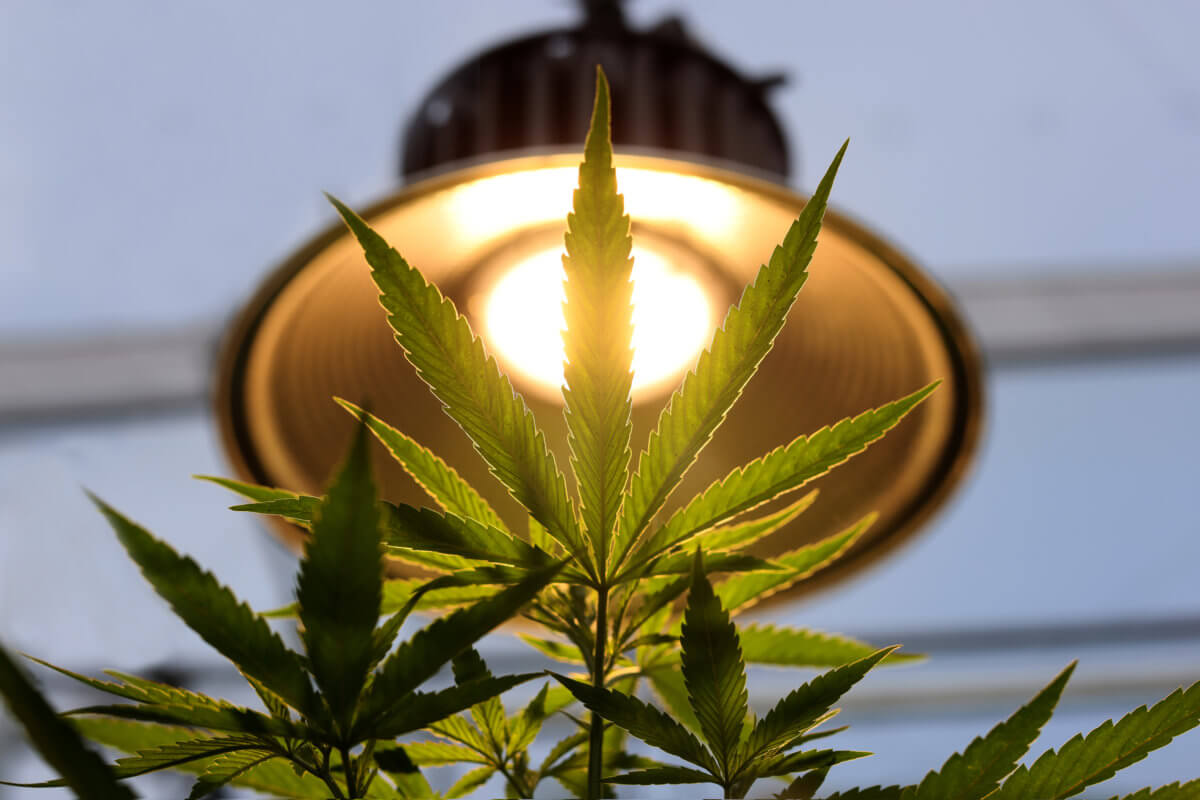
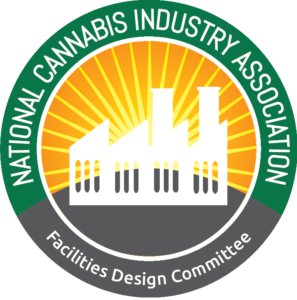 by NCIA’s Facilities Design Committee
by NCIA’s Facilities Design Committee
Facility layout and design are important components of overall operations, both in terms of maximizing the effectiveness and efficiency of the process(s) executed in a facility, and in meeting the needs of personnel. Prior to the purchase of an existing building or investing in new construction, the activities and processes that will be conducted in a facility must be mapped out and evaluated to determine the appropriate infrastructure and flow of processes and materials. In cannabis markets where vertical integration is the required business model, multiple product and process flows must be incorporated into the design and construction. Materials of construction and critical utilities are essential considerations if there is the desire to meet Good Manufacturing Practice (GMP) compliance or to process in an ISO certified cleanroom.
All these activities require a well-thought-out and documented project plan. Unfortunately, many cannabis entrepreneurs that embark on the journey into the industry fail to properly plan, and furthermore fail to understand that proper project planning is the most critical stage of the entire project. Inadequate planning is the primary reason projects spin out of control, take longer to execute, cost more money, and ultimately fail. Proper and effective project planning involves comprehensive mapping and organizing of project objectives and goals, identifying tasks and deliverables, maintaining schedules, proper allocation of resources, and defining roles and responsibilities of team members before the project even gets off the ground. Most problems that lead to project failure can be avoided with proper project planning.
Why is project planning so important? The answer is simple. Proper project planning:
- Ensures project performance and success.
- When tasks, deadlines, deliverables, and responsibilities are defined upfront, there is a better chance the project will run smoothly, efficiently, and be successful.
- Saves money (and keeps investors happy).
- Failed projects are expensive. Rework and delays may lead to project scope creep which subsequently leads to going over budget and missing deadlines.
- Improves team communication.
- When everyone is on the same page and understands the objectives and expectations, projects are effective and timely. Routine team meetings to discuss potential roadblocks to deadlines are key to a project’s success.
- Ensures resources are properly allocated.
- Identifying team members with the appropriate skillsets to lead and manage the various aspects of a project is critical to the success of the project. Assigning an overall project manager is highly recommended.
- Project status is tracked and documented.
- Documenting target dates, deliverables, and metrics is critical for keeping a project on track. This allows everyone to be aligned and informed on tasks, timelines, expectations, and workflow.
There are several considerations when designing a cannabis operation, whether it is a grow room or a product manufacturing facility. Regardless of what type of facility is needed or desired, applicable local, federal, and international regulations and standards must be reviewed to ensure proper design, construction, and operation, as well as to guarantee the safety of employees.
Materials of Construction
The materials of construction for interior work surfaces, walls, floors, and ceilings should be fabricated of non-porous, smooth, and corrosive resistant surfaces that are easily cleanable to prevent harboring of microorganisms and damage from chemical residues. Flooring should also provide wear resistance, stain, and chemical resistance for high traffic applications. Interior and exterior (including the roof) materials of construction should meet the requirements of the International Building Code (IBC), the National Fire Protection Association (NFPA), Occupational Safety and Health Administration (OSHA), and other applicable building and safety standards, particularly when the use, storage, filling, and handling of hazardous materials occurs in the facility.
Utilities
Critical and non-critical utilities need to be considered in the initial planning phase of a facility build out. Critical utilities are the utilities that when used have the potential to impact product quality. These utilities include water systems, Heating Ventilation and Air Conditioning (HVAC), compressed air, and pure steam. Non-critical utilities may not present a direct risk to product quality, but are necessary to support the successful, compliant, and safe operations of a facility. These utilities include electrical infrastructure, lighting, fire detection and suppression systems, gas detection, and sewage.
Water quality, both chemical and microbial, is a fundamental and often overlooked critical parameter in the design phase of cannabis operations. Water is used to irrigate plants, for personnel handwashing, potentially as a component in compounding/formulation of finished goods, and for cleaning activities. Water quality should be tested and monitored to ensure compliance to microbiological and chemical specifications based on the chosen water type, the intended use of the water, and the environment in which the water is used. Overall water usage must be considered during the facility design phase. In addition to utilizing water for irrigation, cleaning, product processing, and personal hygiene, water is used for heating and cooling of the HVAC system, fogging in pest control procedures, and in wastewater treatment procedures. A facility’s water system must be capable of managing the amount of water required for the entire operation. Water usage and drainage must meet environmental protection standards. State and local municipalities may have water usage limits, capture and reuse requirements, and regulations regarding runoff and erosion control that must also be considered as part of the water system design.
Lighting considerations for a cultivation facility are a balance between energy efficiency and what is optimal for plant growth. The preferred lighting choice has typically been High Intensity Discharge (HID) lighting, which includes metal halide (MH), and high-pressure sodium (HPS) bulbs. However, as of late, light-emitting diodes (LED) systems are gaining popularity due to increased energy saving possibilities and innovative technologies. Adequate lighting is critical for ensuring employees can effectively and safely perform their job functions. Many tasks performed on the production floor or in the laboratory require great attention to detail. Therefore, proper lighting is a significant consideration when designing a facility.
Environmental factors, such as temperature, relative humidity (RH), airflow, and air quality, play a significant role in maintaining and controlling cannabis operations. A facility’s HVAC system has a direct impact on cultivation and manufacturing environments, and HVAC performance may make or break the success of an operation. Sensible heat ratios (SHRs) may be impacted by lighting usage and RH levels may be impacted by the water usage/irrigation schedule in a cultivation facility. Dehumidification considerations are critical to support plant growth and vitality, minimize microbial proliferation in the work environment, and to sustain product shelf-life/stability. All of these factors must be evaluated when commissioning an HVAC system. HVAC systems with monitoring sensors (temperature, RH, and pressure) should be considered. Proper placement of sensors allows for real-time monitoring and a proactive approach to addressing excursions that could negatively impact the work environment.
Compressed air is another, often overlooked, critical component in cannabis operations. Compressed air may be used for a number of applications, including blowing off and drying work surfaces and bottles/containers prior to filling operations, and providing air for pneumatically controlled valves and cylinders. Common contaminants in compressed air are nonviable particles, water, oil, and viable microorganisms. Contaminants should be controlled with the use appropriate in-line filtration. Compressed air application that could impact final product quality and safety requires routine monitoring and testing.
- Electrical Infrastructure
Facilities should be designed to meet the electrical demands of equipment operation, lighting, and accurate functionality of HVAC systems. Processes and procedures should be designed according to the requirements outlined in the National Electrical Code (NEC), Institute of Electrical and Electronics Engineers (IEEE), National Electrical Safety Code (NESC), International Building Code (IBC), International Energy Conservation Code (IECC), and any other relevant standards dictated by the Authority Having Jurisdiction (AHJ).
- Fire Detection and Suppression
Proper fire detection and suppression systems should be installed and maintained per the guidelines of the National Fire Protection Association (NFPA), International Building Code (IBC), International Fire Code (IFC), and any other relevant standards dictated by the Authority Having Jurisdiction (AHJ). Facilities should provide standard symbols to communicate fire safety, emergency, and associated hazards information as defined in NFPA 170, Standard for Fire Safety and Emergency Symbols.
Processes that utilize flammable gasses and solvents should have a continuous gas detection system as required per the IBC, Chapter 39, Section 3905. The gas detection should not be greater than 25 percent of the lower explosive limit/lower flammability limit (LEL/LFL) of the materials. Gas detection systems should be listed and labeled in accordance with UL 864, Standard for Control Units and Accessories for Fire Alarm Systems and/or UL 2017, Standard for General-Purpose Signaling Devices and Systems and UL 2075, Standard for Gas and Vapor Detectors and Sensors.
Product and Process Flow
Product and process flow considerations include flow of materials as well as personnel. The classic product and process flow of a facility is unidirectional where raw materials enter on one end and finished goods exit at the other. This design minimizes the risk of commingling unapproved and approved raw materials, components, and finished goods. Facility space utilization is optimized by providing a more streamlined, efficient, and effective process from batch production to final product release with minimal risk of errors. Additionally, efficient flow reduces safety risks to employees and an overall financial risk to the organization as a result of costly injuries. A continuous flow of raw materials and components ensures that supplies are available when needed and they are accessible with no obstructions that could present a potential safety hazard to employees. Proper training and education of personnel on general safety principles, defined work practices, equipment, and controls can help reduce workplace accidents involving the moving, handling, and storing of materials.
Facilities Management
Facilities management includes the processes and procedures required for the overall maintenance and security of a cannabis operation. Facilities management considerations during the design phase include pest control, preventative maintenance of critical utilities, and security.
A Pest Control Program (PCP) ensures that pest and vermin control is carried out to eliminate health risks from pests and vermin, and to maintain the standards of hygiene necessary for the operation. Shipping and receiving areas are common entryways for pests. The type of dock and dock lever used could be a welcome mat or a blockade for rodents, birds, insects, and other vermin. Standard Operating Procedures (SOPs) should define the procedure and responsibility for PCP planning, implementation, and monitoring.
Routine preventative maintenance (PM) on critical utilities should be conducted to maintain optimal performance and prevent microbial and/or particulate ingress into the work environment. Scheduled PMs may include filter replacement, leak and velocity testing, cleaning and sanitization, adjustment of airflow, the inspection of the air intake, fans, bearings, and belts, and the calibration of monitoring sensors.
In most medical cannabis markets an established security program is a requirement as part of the licensing process. Facilities should be equipped with security cameras. The number and location of the security cameras should be based on the size, design, and layout of the facility. Additional cameras may be required for larger facilities to ensure all “blind spots” are addressed. The facility security system should be monitored by an alarm system with 24/7 tracking. Retention of surveillance data should be defined in a Standard Operating Procedure (SOP) per the AHJ. Motion detectors, if utilized, should be linked to the alarm system, automatic lighting, and automatic notification reporting. The roof area should be monitored by motion sensors to prevent cut-and-drop intrusion. Daily and annual checks should be conducted on the alarm system to ensure proper operation. Physical barriers such as fencing, locked gates, secure doors, window protection, and automatic access systems should be used to prevent unauthorized access to the facility. Security barriers must comply with local security, fire safety, and zoning regulations. High security locks should be installed on all doors and gates. Facility access should be controlled via Radio Frequency Identification (RFID) access cards, biometric entry systems, keys, locks, or codes. All areas where cannabis raw material or cannabis-derived products are processed or stored should be controlled, locked and access restricted to authorized personnel. These areas should be properly designated “Restricted Area – Authorized Personnel Only.”
Future Expansion
The thought of expansion in the beginning stages of facility design is probably the last thing on the mind of the business owner(s) as they are trying to get the operation up and running, but it is likely the first thing on the mind of investors if they happen to be involved in the business venture. Facilities should be designed so that they can be easily expanded or adjusted to meet changing production and market needs. Thought must be given to how critical systems and product and process flows may be impacted if future expansion is anticipated. The goal should be to minimize downtime while maximizing space and production output. Therefore, proper up-front planning regarding future growth is imperative for the operation to be successful and maintain productivity while navigating through those changes.
Committee Blog: Future-Proofing Cannabis Manufacturing Facilities
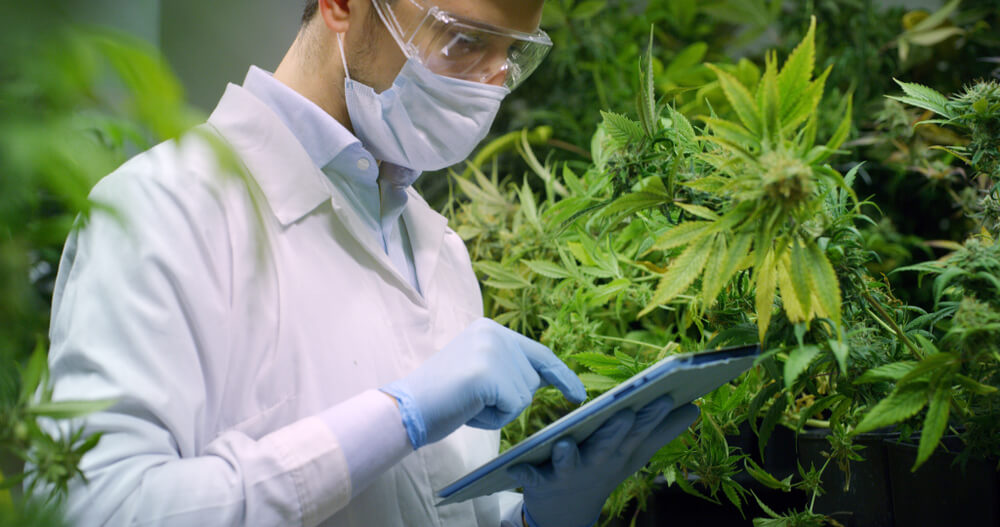
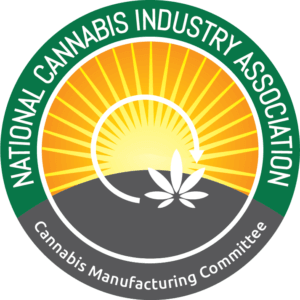 by NCIA’s Cannabis Manufacturing Committee
by NCIA’s Cannabis Manufacturing Committee
As the cannabis industry scales and more states legalize for adult-use, the demand for consumable cannabis products increases. To keep up with the demand, manufacturing facilities have to not only scale, but stay ahead of the curve as far as conserving resources, constantly innovating facility design to meet regulations and third-party compliance, e.g., ASTM Cannabis Certification Program and Good Manufacturing Practices (GMP).
Here are a few areas of environmental, product quality, and worker impacts to consider when planning for the future of your manufacturing facility.
Energy
As with any manufacturing facility, cannabis manufacturers pull power from shared electrical grids, meaning there is increasing pressure to reduce energy usage as they scale their operations. There are many design strategies for facilities to consider, whether they retrofit or build new, to reduce environmental impacts and position their operation for a sustainable future. One example for the cannabis industry is to recapture and repurpose heat generated from the processing equipment used for manufacturing products. Another example is incorporating climate control technologies to reduce the amount of energy required in extreme environments. More and more energy companies are starting to incentivize cannabis operations to reduce their energy usage and offer guidance on how to do so. Furthermore, regulators are beginning to enforce energy usage requirements for manufacturing facilities.
There are many ways to reduce your facility’s energy usage from efficient lighting to control system maintenance and making sure your odor and emissions control systems are designed to your facility’s specific emission load and mechanical design. Whenever possible, installing cloud-based smart systems with the ability to capture energy usage and system maintenance data will help to improve your facility’s energy efficiency. More areas of impact and best management practice guidance can be found in the NCIA’s Environmental Sustainability Report, released in October 2020.
Air Quality
Manufacturers of Infused Products, or MIPs, are Colorado’s manufacturing facilities, which is one example of a market segment facing regulatory enforcements for air quality control. The large-volume use of solvents for extraction leads regulators to monitor the volatile organic compounds (VOCs) emitted from the use of these solvents, as VOCs are contributors to low-level ozone formation, poor air quality, and public health issues. These solvents are also potential contributors to water contamination if wastewater is not discharged properly from the facility and are consequently on the radar for regulators to tightly monitor. The EPA states “the main concern indoors is the potential for VOCs to adversely impact the health of people that are exposed. While VOCs can also be a health concern outdoors, EPA regulates VOCs outdoors mainly because of their ability to create photochemical smog (or low-level ozone) under certain conditions.”
Luckily, smart technology such as cloud-based platforms using the Industrial Internet of Things (IIoT) for control equipment is increasingly being installed in manufacturing facilities, allowing for the collection and monitoring of facility data, such as emissions. Furthermore, the same technologies that are used for odor mitigation, such as molecular filtration systems (aka carbon scrubbers) also remove VOCs in the facilities’ air space from both the products and the solvents in the facility. The ability to prove this removal to regulators with real-time data will help reduce facilities’ contributions to VOC emissions when regulators require reporting.
Worker Health & Safety
In addition to environmental impacts from VOCs, along with other emissions inside of a cannabis manufacturing facility, there is also the issue of indoor air quality and worker health. There is not a lot known about the potential impacts of the processing of cannabis on indoor air quality. What is known is that terpenoids that are emitted in the cultivation and processing of cannabis can contribute, through a series of atmospheric reactions, to the production of known air pollutants. Terpenoids, such as monoterpenes (C10H16) and sesquiterpenes (C15 H24), are highly reactive compounds with atmospheric lifetimes ranging from seconds to hours. These compounds on their own are non-toxic. However, the atmospheric reactions they participate in can result in a range of low volatility products that create aerosols or ozone. These two compounds have clear implications for indoor air quality and thus occupational health.
Uncertainty remains as to the extent of the formation of these pollutants since previous studies have been hampered by a lack of reliable data and are predicated on conditions and practices prevalent in illicit operations. Given that the methods employed in these illegal operations are driven by different needs, the methods currently used in legalized facilities may produce vastly different conditions. This speaks to the urgent need for rigorous new scientific research and evaluation to aid this new industry and relevant regulatory bodies in assessing the current occupational environmental threats of marijuana processing and provide solutions to mitigate those impacts.
Quality by Design
The competitive licensing process, regulatory requirements, and lack of knowledge on scaled cannabis production has contributed to facilities that were not designed to properly ensure control of environments, the process flow that minimizes risks of cross-contamination and the adequate storage for the many types of raw materials, work in process, and final products. The result is an inefficient operation that may have been spared significant Capital Expenses (CapEx), but requires significant Operational Expenses (OpEx) to maintain.
The concept of Quality by Design (QbD) was first developed by the quality pioneer Dr. Joseph Juran. It posits that quality should be designed into a product and recognizes that most quality issues are a result of poor initial design. It is supported by long-standing evidence that increased testing does not necessarily improve product quality.
Currently, there is an overarching emphasis on final product testing as the determinant of whether cannabis products are safe for release into the marketplace. This has pitted labs, regulators, and producers against each other, leading to accounts of lab shopping, exclusive contracts, and other nefarious activities. This approach does not serve anyone, and is in stark contrast with the concept of Quality by Design.
Transitioning from a Quality Control Approach to Quality by Design
Transitioning from our current processes into a proactive Quality by Design approach requires an understanding of Good Manufacturing Practices or GMPs. The first set of GMPs for finished pharmaceuticals were established for enforcement by the United States FDA in the Federal Register in 1963. Since then, GMPs have been created for and adopted globally for nearly all products that can be consumed or applied for human and veterinary use –- categorized under dietary supplements, food, cosmetics, and of course, pharmaceuticals. GMPs represent the minimum sanitary and processing requirements to ensure safe and consistent products. Consider the road map and cross-over between major FDA cGMP (current Good Manufacturing Practices) by industry sector.
GMP regulations are written by the FDA and adopted in the code of federal regulations under the authority given to the FDA by various laws. Almost all of these regulations are performance standards. There are dozens to potentially thousands of substantially different products regulated under each category of GMP standards. It is up to each manufacturer to ensure their unique processes meet the GMP standards. In this way the regulations are flexible yet force all manufacturers to operate with a minimum level of rigor that includes programs that proactively mitigate risks that can lead to product failures and cannot be controlled simply through final product testing. They take a holistic approach to facility operations, starting with the facility culture, design, layout, placement, and selection of equipment, along with ongoing training, supplier qualification, environmental monitoring, and executive commitment.
The current status quo of manufacturing facility design has been built on a quality control approach. Most facility owners believe cannabis will be assigned a cGMP category based on the final product type and have been trying to build compliant facilities under this assumption. Some States have incorporated by reference the federal GMP regulations. However the competitive application process and focus on final product safety via testing has created an environment in which facility owners feel compelled to do as much if not more than the other facilities in order to meet regulator expectations and all focus is on the final product, not the process. In order to win the application, businesses want to look ‘better’ than the other applicants so they tack on as many hazard controls as they can think of. This has given regulators unrealistic expectations as to the best practices required to operate responsibly. Instead of quantifying hazards by collecting data and making informed decisions as to how to best eliminate risks, facilities are simply copying hazard controls they have seen used in other industries with hopes they meet the regulators’ expectations of what a GMP facility looks like. This culture of adding as many hazard controls as possible is a quality control approach focused on the final product, not a Quality by Design approach focused on the process. As a result, envelope in an envelope style facilities in which the manufacturing process is entombed in layers of energy and resource consuming hazard controls are commonplace.
There are other ways of designing compliant facilities; ways that could be more efficient and use less energy and resources. With a Quality by Design approach, these options become explorable. With quantified hazards the process can be approached holistically and significant design questions asked, e.g.. how much energy goes into the outer envelope and how much product quality/safety is gained from that?
In the Southwest deserts, there is consideration given to opening canopy/atrium style extraction spaces that would use less energy while providing the safety of unconstrained open atmosphere ventilation. The important question to ask when considering alternative facility designs is – How much energy/resources goes into containing human contamination versus the likelihood and the actual consequences? Perhaps manufacturing facility workers can wear long sleeves, pants, and hair restraints and that will be sufficient versus wearing a full body gown?
Quantification of Risks
Quantifying the processes and proven hazards of the cannabis manufacturing industry will allow for more informed design and operational choices versus prescriptive solutions that may potentially over-mitigate the risks and possibly introduce additional risks. Moreover, this data would provide validation that the design and operational choices made are in fact the best practices. Instead of scrambling to follow each standard in a quality control approach, Quality by Design considers the whole process, how the 10 principles of GMP standards apply and focuses on finding the most efficient strategies to eliminate risks.
A Way Forward
Training is vital for the manufacturers to know the next steps and why they are critical for the future of cannabis extraction and post-processing. Knowledge is required to put valuable technology, tools, and equipment in place with the least operational downtime. Further, it is necessary to accept guidance from verified knowledgeable support, such as from a vetted supplier. Lastly, risk mitigation education is necessary to highlight the reality of long-term savings and sustainability versus the common short-sighted tendency for immediate cost savings, which can result in significant consequences for a business such as TerrAscend Canada’s 2021 recall of infused gummies due to mold contamination.
Committee Blog: Manufactured Product Safety — Vaporizer Delivery Devices
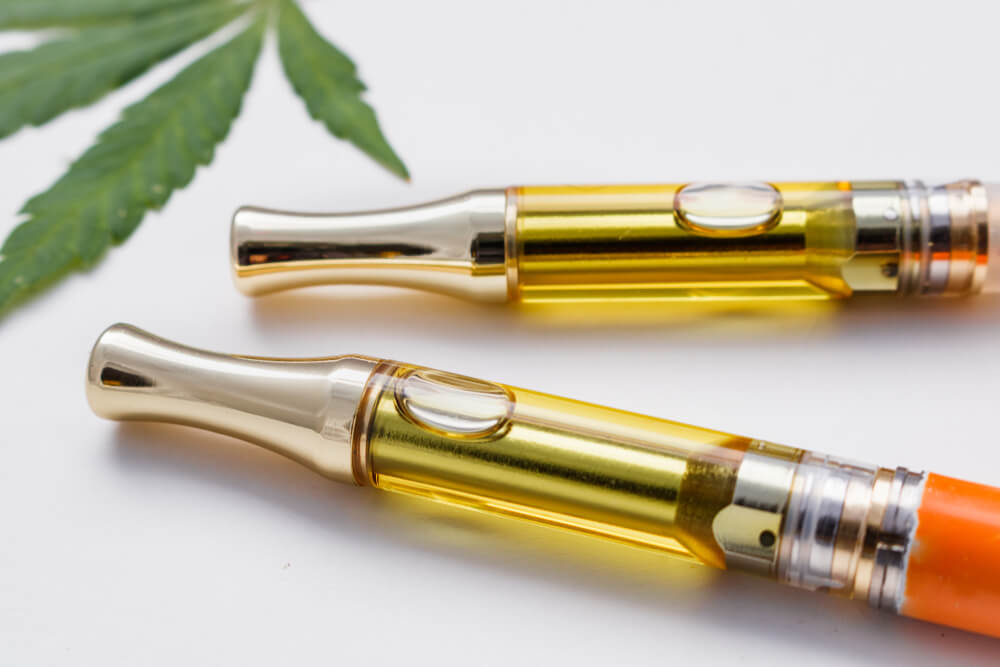
by NCIA’s Cannabis Manufacturing Committee
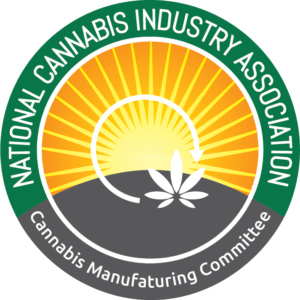 Product safety isn’t an endpoint, it’s a journey. That’s what we told you in the 2021 series premiere, and it continues to hold true. In the last post, we revisited the Vaporizer Liquid Formulations portion of the NCIA’s policy council white paper to provide guidance to the industry. This time, we’re republishing the Vaporizer Delivery Devices section below. We’ve learned more about EVALI since its original publication, and while some of the specifics may be a little dated, the principles remain relevant to helping you understand vapor product safety.
Product safety isn’t an endpoint, it’s a journey. That’s what we told you in the 2021 series premiere, and it continues to hold true. In the last post, we revisited the Vaporizer Liquid Formulations portion of the NCIA’s policy council white paper to provide guidance to the industry. This time, we’re republishing the Vaporizer Delivery Devices section below. We’ve learned more about EVALI since its original publication, and while some of the specifics may be a little dated, the principles remain relevant to helping you understand vapor product safety.
Over the course of the next several months, we’ll bring you new content with the following working titles.
The Importance of Testing Vapor Products as a System
Edibles Stability – Microbial Growth Due to Insufficient Packaging
Terpene Limits Across Multiple Product Formats
So, while we wait with bated breath for this exciting new content, enjoy the excerpt below!
Excerpted from The Key To Consumer Safety: Displacing The Illicit Cannabis Market Recommendations For Safe Vaping. Access the full report and citations.
Background
While the technology used to vaporize cannabis extracts have been around for many years, advancements in vaporization technology and supply chains over the past decade have led to widespread adoption and growth of vaporization as a preferred method of cannabis consumption. Vaporizer devices offer the benefits of being discreet, allowing for metered consumption, and eliminating carbon associated with combusting cannabis flower. However, not all vaporizer devices are created equal and manufacturers should develop an understanding of the nuances of different vaporizer devices to ensure the delivery of a safe and high-quality experience. Aside from considering experiential qualities such as taste and the amount of vapor produced, manufacturers should consider at least the following three categories of issues that can present safety risks.
Physical Design Considerations
Vaporizer devices should be mechanically and electrically safe. This starts with relatively basic considerations that include ensuring the device is mechanically sound, does not leak alkaline or heavy metals, and is not configured in a manner that presents a safety hazard. In the early 2010s, there were many reported instances of vaporizer devices exploding. This was primarily due to improper electrical design and battery cell protection. Battery cells that are not protected from drawing current beyond their rated capacity or are allowed to drain too deeply present a safety risk. In fact, this risk led to the development of the UL 8139 standard for e-cigarette battery safety and the FDA recently relaxed its prohibition on e-cigarette battery changes in order to allow manufacturers to comply with this standard. UL 8139 is applicable to vaporizer devices and anyone who sources or develops a vaporizer device for the cannabis market should voluntarily comply.
Contamination by Hardware
Vaporizer device hardware should be tested for the presence of heavy metals. Currently, some manufacturers use Restriction of Hazardous Substances (RoHS) testing or rely on vendor representations that the components and materials being used are certified as FDA food-grade. The California Bureau of Cannabis Control mandated heavy metals testing standards for the three categories of cannabis products, including inhalable cannabis products, starting on December 31, 2018.
Vaporizer device hardware that comes into contact with cannabis formulation should also be free of other contaminants. It is important to consider both contaminants that could be immediately detectable in vaporizer devices as well as those that can be released or created over time. Vaporizer devices are designed using a variety of industrial manufacturing processes, some of which can leave residual oils, biological agents, or other substances in the device. It is important that device manufacturers clean incoming components, assemble them in a clean environment, then store and ship them in a manner that prevents re-contamination. Depending on the nature of the component, one or more of a cleaning bath or ozone treatment may be used for cleaning. After cleaning, assembly of vaporizer components should be performed in a cleanroom environment under appropriate current Good Manufacturing Practices (cGMP). Unfortunately, simply asking a device manufacturer whether it operates in such a manner is not sufficient to be certain that it does. There is no substitute for first-hand inspection of manufacturing processes. While it may not be practical for U.S.-based cannabis manufacturers to maintain a constant presence in the country of manufacture, it is possible to hire local agents who are skilled in audit practices and can perform unannounced inspections to verify that desired practices are implemented within the supply chain.
As noted above, hardware may also introduce contamination into the formulation over time, either through the process of leaching heavy metals or through chemical reaction. Leaching is a process whereby soluble constituents that may be present in materials dissolve into a formulation. A well-known example was the discovery that plasticizers present in certain plastic food and beverage containers were leaching and then being consumed. As a result, new types of plastics were developed for improved food safety. Vaporizer components that contact cannabis formulations may present a similar issue and leaching may be tied to metals, ceramics, plastics, or other materials. In addition to leaching, certain materials may react with cannabis formulations, especially those with high terpene content which tends to be more volatile. Moreover, metal components in contact with formulations may be especially susceptible to leaching and lead to contaminants such as heavy metals in the formulation.
The good news is that it is possible to address this risk of leaching through the use of appropriate base materials and or plating. Base materials such as stainless steel are good candidates because of their low tendency to react with formulations. Plating other materials with corrosion-resistant metals is also possible; however, care must be taken to specify the right material and plating thickness while also ensuring the plating is not damaged during assembly.
With proper material selection and design, it is possible to reduce the risk of such contamination, including through conducting stability tests. In a stability test, a formulation is placed into the vaporizer device for a period of time, then removed and tested for contaminants. A good guide is to design the stability test to align with the desired shelf life of the product. That doesn’t necessarily mean the test needs to be as long as the rated shelf life. Typically, elevated temperature tests are used to determine stability and can cut the duration of the test to 50% or less of the desired shelf life. In addition, by taking measurements at intermediate intervals, stability can be better characterized and the point at which contaminants would exceed their respective limits can be projected.
Device Impact on Formulation: Control the Heat
The most fundamental, yet perhaps the most underappreciated aspect of vaporizer devices is how they vaporize cannabis formulations. Setting aside dry herb vaporizers, all liquid cannabis vaporizers basically work by bringing the formulation into contact with a hot surface in order to heat it and thus create vapor. While this may seem straightforward, there are a number of subtleties that affect the outcome. First, the temperature of the hot surface must be hot enough to heat the liquid, yet not so hot as to cause components of the formulation to degrade into byproducts that could be harmful. In fact, one study demonstrated how changing the voltage, and thus the temperature of an unregulated vaporizer device can affect the production of such degradants. While more advanced vaporizer devices attempt to control vaporization temperature by using heating elements made of specific materials that indirectly measure temperature and regulate the power delivered to the heating element, the majority do not.
Different formulations have different compositions and contain constituents that vaporize and degrade at various temperatures. This means that to fully control vaporization, the vaporizer device must be configured precisely to the requirements of the formulation in use. Second, many vaporizer devices do not heat uniformly. Rather, the heated surfaces heat unevenly, creating hot spots that can locally trigger thermal degradation. Temperature control circuits typically measure an average temperature and do not prevent such hot spots. Finally, the majority of vaporizer devices, whether they contain fiber wicks or ceramic, rely on capillary action to bring the formulation into contact with the heated area or surface. During a puff, capillary action is also what replenishes the formulation at the heated surface, and such capillary replenishment takes time. Depending on the viscosity of the formulation and the duration of the puff, a heated surface that was initially saturated with the formulation can become dry and hot during the course of a puff. Experienced users sometimes refer to this as a “dry hit,” which can be perceived when a cartridge runs dry or during a long puff. Dry hits can result in increased thermal degradation.
Armed with this understanding of the nuances of vaporizer devices, one can appreciate how the common business model of selling cartridges with a universal 510 threaded connection that can be used in conjunction with any number of batteries, any number of power settings, and filled with a variety of formulations makes it difficult to guarantee what is produced during vaporization. In order to understand and control the output of a vaporizer device, the system should be designed, configured, and tested as a whole; cartridge and battery, plus formulation. Closed systems with proprietary connectors and one-piece designs do not face the cartridge-battery mismatch challenge, but should still be tested in conjunction with the target formulation using a reasonable worst-case puff duration. And while new systems under development that employ non-contact heating methods may not present the same temperature control challenges, they too should be validated as a whole.
The Cannabis Manufacturing Committee (CMC) focuses on reviewing existing business practices and state regulations of concentrates, topicals, vaporizers, and edibles, ensuring the manufacturing sector is helping shape its destiny.
Member Blog: While You Are At Home (Part 2) – Time To Prepare For Achieving GMP Certification

by Merril Gilbert, CEO of Trace Trust and David Vaillencourt, CEO of The GMP Collective
In our last article, we discussed the benefits of Good Manufacturing Practices as a means to increase productivity, efficiency, and to drive accountability within an organization. With cannabis and hemp businesses negatively impacted by the ongoing COVID-19 pandemic, tight budgets are even tighter and existing room for errors are tighter than ever. As we begin to carefully rise out of the pandemic, failing to address recurring errors and inefficiencies will be catastrophic. In this follow up article, we dive into a few key systems that make up a GMP facility that you can get started on regardless of whether you are at home or on-site.
Internal (Self) Auditing
Even the most thorough and diligent people make mistakes or forget something from time to time. When you have a business that requires multiple people to make it run, the chances of a mistake increase exponentially. Left unchecked, this can result in catastrophic issues such as inventory reconciliation issues, customer dissatisfaction, product nonconformities, recalls, and even lawsuits. An internal audit program utilizes checklists to periodically conduct independent reviews of all operational areas at predefined intervals. Non-conformances are identified, and corrective action plans are implemented. This best practice is not only a GMP requirement but drives continuous improvement within your organization, ensuring:
- List out all functional areas
- Generate a matrix to establish the frequency of auditing for each functional area (we recommend every functional area be audited at least once per year – you can spread the auditing workload out over a calendar year rather than doing a full business audit once a year).
- Conduct reviews of relevant procedures, documents, and records within those areas
- Document the findings (including non-conformities)
- Develop corrective action plans with the functional area manager to reconcile these non-conformities
- Establish a timeline for closeout
- Verify the effectiveness of the corrective action by conducting a spot audit 30-days later
Supplier Management
Did you encounter new challenges with the ability of your existing suppliers to provide you with the quality and timeliness of your raw materials, parts, or ingredients for your operation? Supplier management is a key component of a GMP program and ensures that you are able to deliver on your promises to the final client, be it the customer/patient, or another business in the supply chain. Items to include in a supplier management program include:
- A Vendor Qualification Form
- Quality Agreements
- Right to Audit
- Terms and conditions regarding product quality (specifications), and % of on-time performance
- Documentation – upon delivery and retained over time
Review your existing contracts and supplier program. Don’t have a formal program in place? Get one started now based on existing relationships and their frameworks, and enjoy the benefits of this program as the economy slowly reopens.
Document Control
Do you have a list of all procedures, forms, and record books? Are they all stored in one binder in the Compliance office or do personnel have access via an electronic Document Management System. How do you ensure when a revision to a document is made that the old one is removed from circulation and not accidentally used by an employee? Document control is a pesky activity that many see as an administrative burden. However, discovering that a new formulation recipe was not being followed by a few employees because they were still using an outdated copy of the procedure for the last 3 months will justify any administrative burden and then some. Fortunately, being the year 2020, affordable electronic systems exist to streamline the process of effectively documenting and communicating all changes to relevant personnel, keeping your business compliant and operating efficiently.
Cleaning and Sanitation Validation
It is likely you increased your cleaning and sanitation regiment in light of COVID-19. How will you know when it is appropriate to scale back to pre-COVID regimens? Do you have any evidence that your prior cleaning and sanitation procedure was effective? Many companies are surprised to hear that their procedures are grossly ineffective. In one example, a company required personnel to wear Crocs in the ‘clean’ production areas. They also wore copious amounts of PPE (fresh lab gown and pants, hair nets, face shields) any time they went into a cultivation room. However, they suffered from significant pest outbreaks that seemed to spread from room-to-room with ease. They even had sticky mats outside of every room. The problem? The Crocs! A simple ATP test revealed bioburden levels that would make a college football port-o-potty seem clean. They were able to reduce their PPE levels by reorganizing workflows and periodically disinfecting the crocs, and their pest outbreaks disappeared within 4 weeks!
The cost – a few hundred dollars in testing for pathogens every week as part of their cleaning and sanitation program. By validating their results (running multiple tests and coming up with the same non-detect result) they were confident that their processes were effective (or as we call it in the GMP world – Validated).
Risk Management and Business Continuity
This final one is not an explicit GMP requirement, but, when built into your overall Quality System can provide you with quantifiable benefits. One of the other business disruptions that became evident in the COVID-19 era was how many companies did not have an effective Workplace Crisis Management Plan in place. Along with the GMP audit process it is recommended to review and update business continuity plans. What was learned during COVID-19? Where are gaps in the chain of communication, processes, and policies? How can we improve our training programs? Taking time to improve and adapt operating procedures will continue to build trust and effectiveness in your business.
 Merril Gilbert, Co-Founder and CEO of Trace Trust and A True Dose™ and hGMP™ the first universal independent certification programs for dose accuracy in legal Cannabis and Hemp derived ingestible products. Always at the forefront of emerging trends on the future of food, technology, health and wellness, she leverages 25 years of experience of creative development, operations and investment for everything food and beverage. Current Chair of the NCIA Education Committee.
Merril Gilbert, Co-Founder and CEO of Trace Trust and A True Dose™ and hGMP™ the first universal independent certification programs for dose accuracy in legal Cannabis and Hemp derived ingestible products. Always at the forefront of emerging trends on the future of food, technology, health and wellness, she leverages 25 years of experience of creative development, operations and investment for everything food and beverage. Current Chair of the NCIA Education Committee.
 David Vaillencourt, CEO of The GMP Collective. David and his team at The GMP Collective bring decades of pharmaceutical and food industry best practices to cannabis and hemp. He holds a Master’s Degree, is a Certified Food Systems Auditor and brings a decade of experience in various governmental scientific work. David supports the industry in many ways, including serving as an Officer on ASTM International’s D37 Cannabis Standards Development Committee, participation in NCIA’s Facility Design Committee, and has also developed cannabis training content for college courses.
David Vaillencourt, CEO of The GMP Collective. David and his team at The GMP Collective bring decades of pharmaceutical and food industry best practices to cannabis and hemp. He holds a Master’s Degree, is a Certified Food Systems Auditor and brings a decade of experience in various governmental scientific work. David supports the industry in many ways, including serving as an Officer on ASTM International’s D37 Cannabis Standards Development Committee, participation in NCIA’s Facility Design Committee, and has also developed cannabis training content for college courses.

 by NCIA’s Facilities Design Committee
by NCIA’s Facilities Design Committee

 by NCIA’s
by NCIA’s 
 Product safety isn’t an endpoint, it’s a journey. That’s what we told you in the
Product safety isn’t an endpoint, it’s a journey. That’s what we told you in the 
 Merril Gilbert, Co-Founder and CEO of
Merril Gilbert, Co-Founder and CEO of  David Vaillencourt, CEO of
David Vaillencourt, CEO of